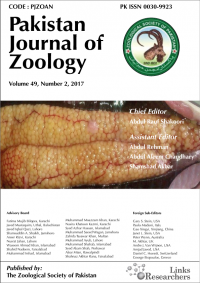Biochemical and In Silico Characterization of a Recombinant, Highly Thermostable α-Glucosidase from Thermococcus radiotolerans DSM-15228
Biochemical and In Silico Characterization of a Recombinant, Highly Thermostable α-Glucosidase from Thermococcus radiotolerans DSM-15228
Hayam Albalawi1,2, Muhammad Shahid Nadeem1*, Hisham N. Altayeb1,
Saima Iftikhar3, Mariam A. Al-Ghamdi1,4,5, Jalaluddin Azam Khan1 and Ahmed Osman1
ABSTRACT
α-glucosidase (EC 3.2.1.20) is the enzyme catalyzing α-1,4-glycosidic linkage between the glucose moleculecules in disaccharides like maltose. The enzyme is ubiquitous in nature and has applications in the glucose and ethanol production processes on industrial scale. α-glucosidase found in the human intestine is considered as am important target in the management of diabetes type II. We have produced a recombinant of α-glucosidase from Thermococcus radiotolerans in E. coli strain BL21 (DE3) codon plus RIPL in the presence of 1 mM IPTG. The enzyme was purified by selective precipitation and cation exchange chromatography, it displayed a 30 kDa band on SDS-PAGE. The purified recombinant of enzyme exhibited an optimal activity at pH 6, and 85°C, it retained more than 50% activity after incubation at 100°C for 5 min. A Km value of 28.1 mM of maltose and 26.3 μmol per min Vmax was determined by Lineweaver-burk plot. In silico studies have suggested Glu109, Ala107, Tyr104, Glu41, Arg44, Asn45, Glu48 as the main active site residues of the enzyme. Molecular docking studies have shown that the enzyme investigated in the present study and human α-glucosidase have similar active site composition. Affinity studies with ten well established inhibitors have shown similar free energy change (ΔG) values for human and microbial enzymes indicating the evolutionary conserved structural and functional domains in the enzyme from phylogenetically different species.
To share on other social networks, click on any share button. What are these?










